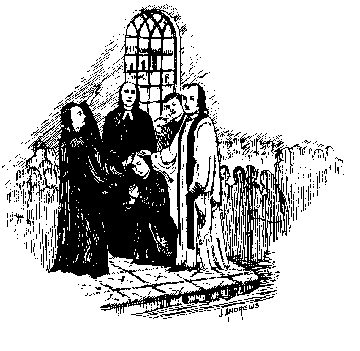The Lovely Lane Chapel was built in 1774. Ten years later, the chapel hosted the famous Christmas Conference, where a new denomination was born: the Methodist Episcopal Church.
John Wesley had reluctantly agreed to the American Methodists’ desire to organize their own church. He sent Thomas Coke to supervise the process and to consecrate Francis Asbury as “general superintendent” of the Methodists in America. When Coke and Asbury met at Barratt’s Chapel in November 1784, Asbury refused the appointment unless the preachers elected him. The meeting was scheduled for the next month, December, at Lovely Lane Chapel in Baltimore.
Freeborn Garrettson was sent “like an arrow,” in Coke’s words, to contact as many preachers as possible to meet in Baltimore. Garrettson recorded in his journal: “My dear Master enabled me to ride about twelve hundred miles in about six weeks; and preach going and coming constantly. The conference began on Christmas day.” More than sixty preachers (and numerous visitors) responded to Garrettson’s call.
Friday, December 24, 1784: …It was agreed to form ourselves into an Episcopal Church, and to have superintendents, elders, and deacons. When the conference was seated, Dr. Coke and myself were unanimously elected to the superintendency of the Church, and my ordination followed …We spent the whole week in conference, debating freely, and determining all things by a majority of votes… We were in great haste, and did much business in a little time. Francis Asbury, Journal.
Besides organizing a church and approving Asbury and Coke as their leaders, the members elected twelve preachers as “elders,” Wesley’s suggested term for fully ordained clergy. The conference also formally adopted The Sunday Service, Wesley’s abridgement of the English Book of Common Prayer, as the new church’s liturgical guide.
In 1786, the Lovely Lane Chapel relocated to nearby Light Street, and the original site on Lovely Lane (now Redwood Street) was later occupied by the Merchants Club, whose building now houses the Baltimore International College.
Today the Lovely Lane name is kept alive by the continuing congregation, formerly First Methodist Church, now again Lovely Lane United Methodist Church.
Points of interest at this Heritage Landmark: Nothing remains of the original Lovely Lane Chapel on this site; there is a bronze tablet on the outside of the building located at 206 E. Redwood Street, which may be viewed at any time. A brick from the original Chapel is on display at the Lovely Lane Museum.
Special events: Lovely Lane Church annually celebrates its founding by Joseph Pilmore on June 22, 1772.
Area attractions: The Lovely Lane United Methodist Church, 2200 St. Paul Street, houses the Lovely Lane Museum, which has many artifacts of early American Methodism on display. The church itself is on the National Register of Historic Places, having been designed by Stanford White in 1884. Also in Baltimore is Mt. Olivet Cemetery, where are buried Bishops Asbury, Emory, George, and Waugh; Robert Strawbridge, Jesse Lee, and E. Stanley Jones. Other Heritage Landmarks in this annual conference are Old Otterbein Church, the Robert Strawbridge House, and the Cokesbury College Site.
To visit: The Heritage Landmark plaque is on the exterior of the building on Redwood Street and may be viewed at any time.
Location: Within the boundaries of the Baltimore-Washington Annual Conference, in Baltimore City, Maryland.
Food and lodging: Many hotels are within six blocks of the Heritage Landmark, as are restaurants, particularly at Harborplace, two blocks south.
Directions: From the end of Interstate 83: go west on Lombard Street, then north on South Street, then west on Redwood Street.
From Interstate 395: go east on Pratt Street, then north on South Street, then west on Redwood Street.
For further information, contact: Rev. Levon Sutton, Lovely Lane UM Church, 2200 St. Paul St., Baltimore, MD 21218-5805; 410-889-1512; or E-mail: LovelyLane.BCS@gmail.com.
To learn more about United Methodist church history in this area:
BWC Director of Museums & Pilgrimage/Conference Archivist Rev. Bonnie McCubbin, E-mail: bmccubbin@bwcumc.org.
Ruthella Bibbins, How Methodism Came: The Beginnings of Methodism in America (Baltimore: Strawbridge Shrine Association, 1987).
Russell E. Richey, Early American Methodism (Bloomington: Indiana University Press, 1991).

